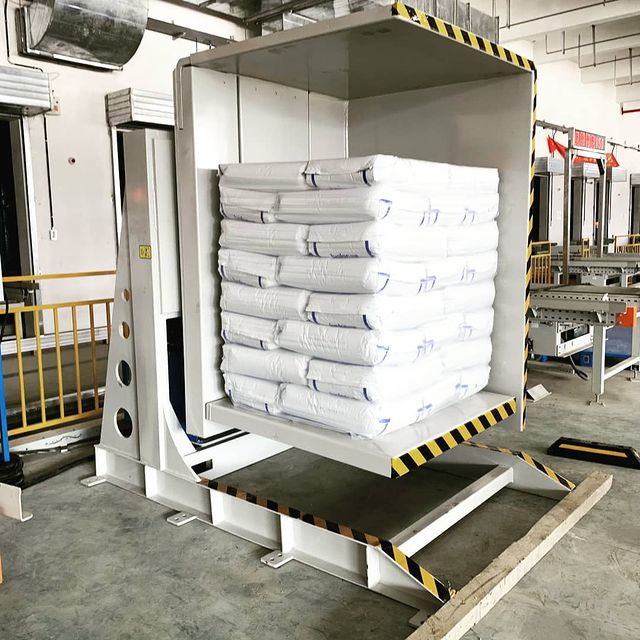
A stationary pallet inverter is a versatile and efficient material handling equipment designed to rotate pallets, crates, and other bulky loads to facilitate various industrial processes. Its primary function revolves around the safe and seamless transfer of goods between different containers or pallets, making it an indispensable tool in warehouses, manufacturing facilities, distribution centers, and logistics operations worldwide.
Functions:
The core function of a stationary pallet inverter is to invert or rotate pallet loads, typically by 180 degrees. This process involves clamping the palletized load securely, then flipping it upside down or sideways as required. This rotation can be manual, semi-automatic, or fully automated, depending on the specific model and application requirements.
Uses:
-
Load Stabilization: Stationary pallet inverters are used to stabilize loads by transferring them from damaged or unstable pallets to new or reinforced ones. This ensures the integrity of the load during storage, transit, and handling.
-
Product Reorientation: In industries such as food and beverage or pharmaceuticals, where product orientation is crucial for quality control or processing, pallet inverters are employed to reorient goods without manual handling, reducing the risk of contamination or damage.
-
Damage Reduction: By allowing for the gentle handling of goods during transfers, pallet inverters help minimize product damage and loss, leading to cost savings and improved customer satisfaction.
-
Space Optimization: Inverting pallet loads can facilitate better space utilization within warehouses or storage areas, allowing for denser packing and efficient use of available space.
Usage Scenarios:
-
Manufacturing: In manufacturing facilities, pallet inverters are used to streamline production processes by facilitating the transfer of raw materials or finished goods onto standardized pallets or containers.
-
Warehousing: Within warehouses, pallet inverters play a vital role in inventory management, enabling the consolidation of partial pallet loads, repackaging of damaged goods, and reorganization of storage configurations.
-
Distribution: In distribution centers, pallet inverters expedite the handling of mixed SKU pallets, allowing for faster order fulfillment and cross-docking operations.
-
Retail: Retailers utilize pallet inverters to repackage bulk shipments into smaller, shelf-ready units, reducing handling costs and optimizing store replenishment processes.
Advantages:
-
Efficiency: Pallet inverters streamline material handling processes, reducing labor requirements and cycle times while improving overall operational efficiency.
-
Versatility: They can accommodate a wide range of load sizes, shapes, and types, including pallets, crates, drums, and containers, making them suitable for diverse industry applications.
-
Safety: By automating load handling tasks, pallet inverters minimize the risk of workplace injuries associated with manual lifting, bending, and twisting motions.
-
Cost Savings: Reduced product damage, improved space utilization, and enhanced productivity contribute to significant cost savings over time, justifying the initial investment in pallet inverter equipment.
In conclusion, stationary pallet inverters are indispensable tools in modern material handling and logistics operations, offering versatile functionality, enhanced efficiency, and tangible benefits across various industry sectors. Whether it’s load stabilization, product reorientation, damage reduction, or space optimization, these innovative devices continue to play a crucial role in optimizing supply chain processes and driving business success.
